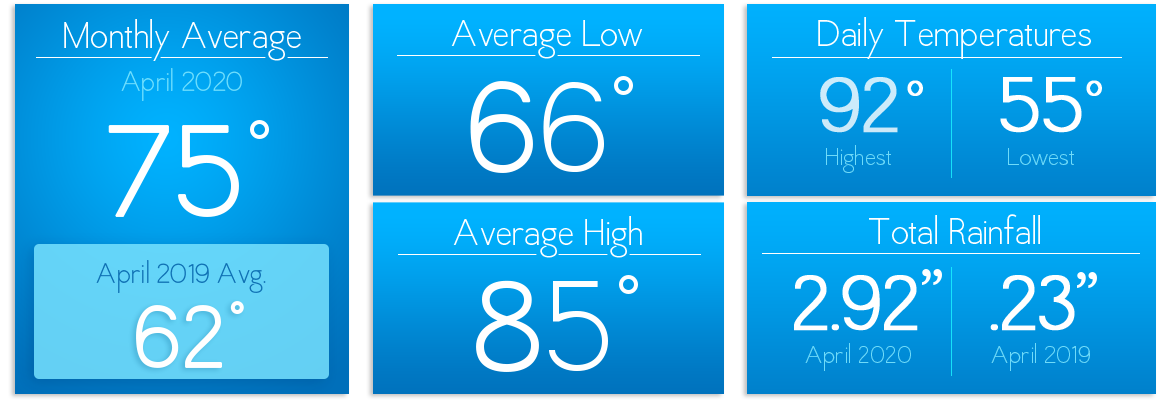Sunshine State Stats April 2020
April was another warm month for Central Florida. The average temperature was 75.1 degrees which is 1.6 degrees warmer than the average April temperature. The lows dipped down to 55 degrees early in the month, and later the high peaked at 92 degrees three straight days and again on the 19th.

The average high temperature was 84.77 degrees in April 2020 compared to 82.8 degrees in 2019, while the average low temperature was 65.5 degrees in 2020 versus 62.13 degrees during April 2019.
It was a warmer April than normal, but we received nearly the same amount of rain as last April. April typically produces a little over 2.8 inches of precipitation, and 2020 provided just above that at 2.92 inches.
April weather was warmer than last year while most of the executive orders that we saw take effect in March were still in place due to the COVID-19 situation. The Coronavirus continues to be on the forefront and influences the day-to-day activity for many Floridians. This will continue to have an impact on electric use due to families being home more throughout the day.
Did you know that increased heat from the sun does not necessarily equate to more solar production? Solar performs optimally at ≤77 degrees ambient air temperature. For every 3 degree rise above 77 degree you can see as much as a 1% decrease in production.
May temperatures normally average 78.8 degrees with precipitation averaging just over four inches for the month. The trend so far this year has been on the warmer side. SECO Energy is wishing you a healthy and blessed month of May.
To check historical usage, log into SmartHub to view past bills and consumption charts. If your usage is high, SECO offers several energy-efficiency tools to help you identify energy wasters. Take the Home Energy Assessment to receive a detailed email tailored to your home’s features and lifestyle. The energy-saving advice will provide low-cost ways to decrease your usage – and your electric bill.
To easily calculate how much energy your appliances, lighting, electronic devices, and other energy-using items in your home consume, use the Energy Estimator.






